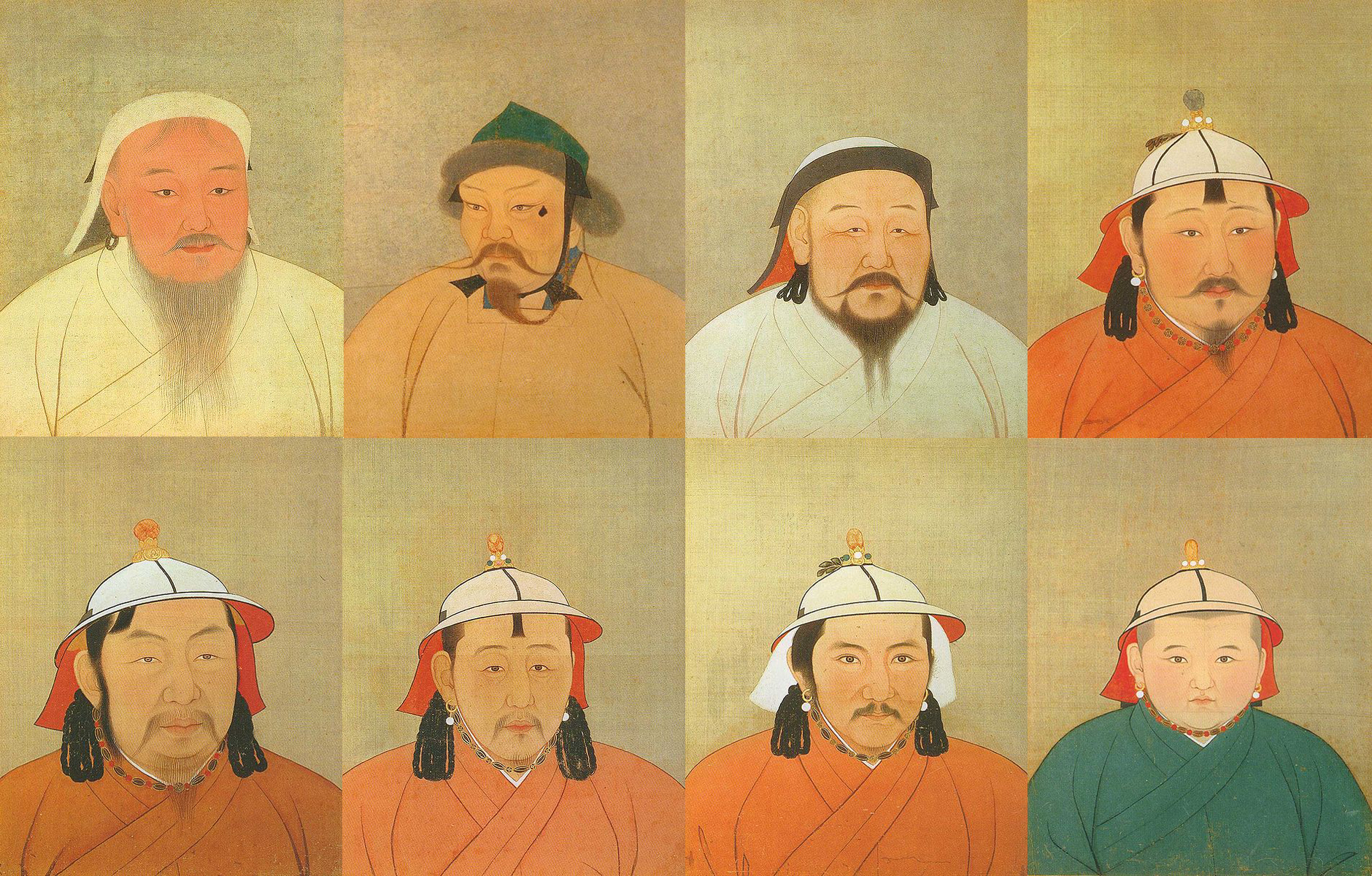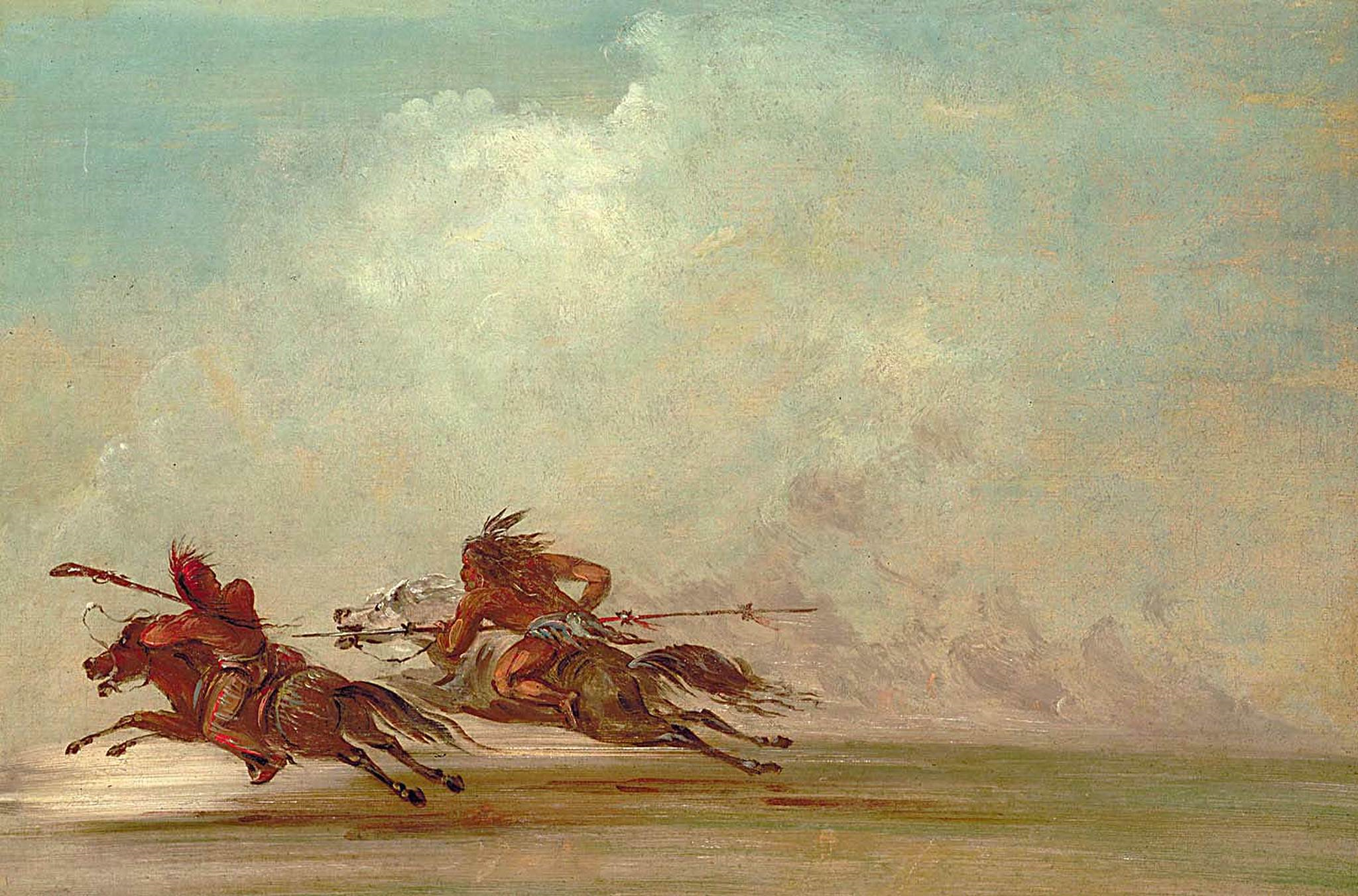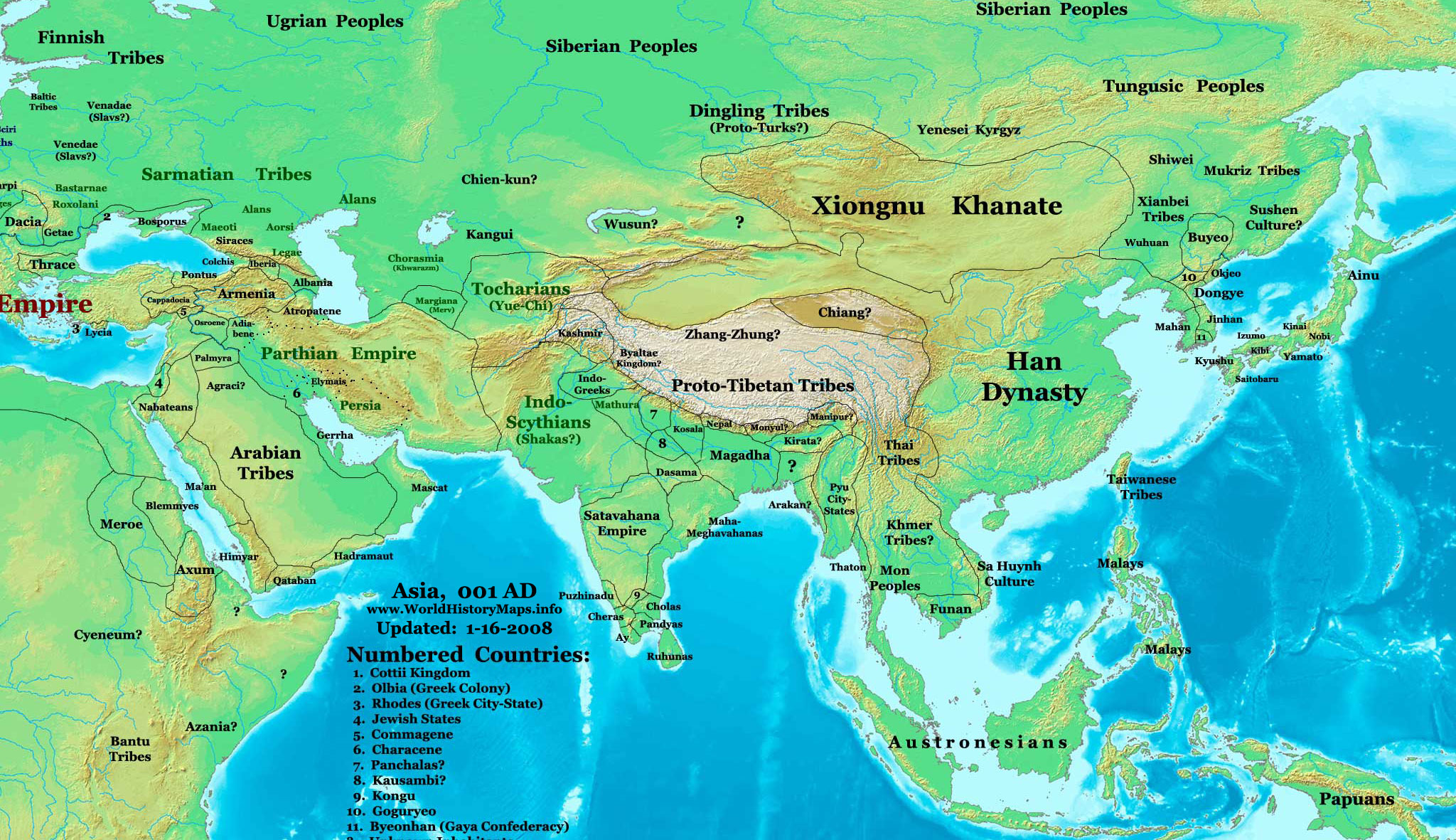|
Rourans
The Rouran Khaganate ( Chinese: zh, c=, p=Róurán, label=no), also known as Ruanruan or Juan-juan ( zh, c=, p=Ruǎnruǎn, label=no) (or variously ''Jou-jan'', ''Ruruan'', ''Ju-juan'', ''Ruru'', ''Ruirui'', ''Rouru'', ''Rouruan'' or ''Tantan''), was a tribal confederation and later state founded by a people of Proto-Mongolic Donghu origin. The Rouran supreme rulers used the title of , a popular title borrowed from the Xianbei. The Rouran Khaganate lasted from the late 4th century until the middle 6th century with territories that covered all of modern-day Mongolia and Inner Mongolia, as well as parts of Manchuria in Northeast China, Eastern Siberia, Xinjiang, and Kazakhstan. The Hephthalites were vassals of the Rouran Khaganate until the beginning of the 5th century, with the royal house of Rourans intermarrying with the royal houses of the Hephthalites. The Rouran Khaganate ended when they were defeated by a Göktürk rebellion at the peak of their power, which subsequently l ... [...More Info...] [...Related Items...] OR: [Wikipedia] [Google] [Baidu] |
Mugulü
Mugulü ( zh, c=木骨閭, p=Mùgǔlǘ) was a legendary warrior and chieftain in the Mongolian Plateau during the period when it was under the rule of tribes and peoples originating from the fragmentation of the failed and crumbling Xianbei confederation. The term "Mongol" is a likely derivation from his name. Biography Mugulü was likely born before AD 277, at the end of Tuoba Liwei's reign.Weishvol. 103始神元之末,掠騎有得一奴 tr. "In the beginning of the end of the Shenyuan, a uobaraider cavalryman acquired a slave" Little is known about his childhood. His date and place of birth, and the names of his parents or those of his consorts, are not disclosed in Book of Wei. He served in the Xianbei army under the leadership of the Tuoba tribal chief, Tuoba Yilu (295–316) of Dai. Possibly a legendary figure, he was a fugitive slave according to Chinese sources, however one researcher thinks that this is questionable and assumes that Chinese authors frequently ... [...More Info...] [...Related Items...] OR: [Wikipedia] [Google] [Baidu] |
Hephthalites
The Hephthalites (), sometimes called the White Huns (also known as the White Hunas, in Iranian languages, Iranian as the ''Spet Xyon'' and in Sanskrit and Prakrit as the ''Sveta-huna''), were a people who lived in Central Asia during the 5th to 8th centuries CE, part of the larger group of Eastern Iranian Huns. They formed an empire, the Imperial Hephthalites, and were militarily important from 450 CE, when they defeated the Kidarites, to 560 CE, when combined forces from the First Turkic Khaganate and the Sasanian Empire defeated them. After 560 CE, they established "principalities" in the area of Tokharistan, under the suzerainty of the Western Turks (in the areas north of the Amu Daria, Oxus) and of the Sasanian Empire (in the areas south of the Amu Daria, Oxus), before the Tokhara Yabghus took over in 625. The Imperial Hephthalites, based in Bactria, expanded eastwards to the Tarim Basin, westwards to Sogdia and southwards through Afghanistan, but they never went beyond the ... [...More Info...] [...Related Items...] OR: [Wikipedia] [Google] [Baidu] |
Khagan
Khagan or Qaghan (Middle Mongol:; or ''Khagan''; ) or zh, c=大汗, p=Dàhán; ''Khāqān'', alternatively spelled Kağan, Kagan, Khaghan, Kaghan, Khakan, Khakhan, Khaqan, Xagahn, Qaghan, Chagan, Қан, or Kha'an is a title of empire, imperial rank in Turkic languages, Turkic, Mongolic languages, Mongolic, and some other languages, equal to the status of emperor and someone who rules a khaganate (empire). The female equivalent is Khatun. It may also be translated as "Khan (title), Khan of Khans", equivalent to King of Kings. In Bulgarian, the title became known as ''Khan'', while in modern Turkic, the title became ''Khaan'' with the ''g'' sound becoming almost silent or non-existent; the ''ğ'' in modern Turkish language, Turkish ''Kağan'' is also silent. After the division of the Mongol Empire, monarchs of the Yuan dynasty and the Northern Yuan held the title of ''Khagan''. ''Kağan, Hakan'' and ''Kaan'', Turkish language, Turkish equivalents of the title are common Tur ... [...More Info...] [...Related Items...] OR: [Wikipedia] [Google] [Baidu] |
Rouran Language
Rouran (), also called Ruanruan, Ruan-ruan or Juan-juan (), is an unclassified extinct language of Mongolia and Inner Mongolia, spoken in the Rouran Khaganate from the 4th to the 6th centuries AD, considered a likely early precursor to Mongolic. Peter A. Boodberg claimed in 1935 that the Rouran language was Mongolic by analysing Chinese transcriptions of Rouran names. Atwood (2013) notes that Rourans calqued the Sogdian word ''pūr'' "son" into their language as *''kobun'' (Chinese transliteration: 去汾 MC *''kʰɨʌH-bɨun'' > Mandarin ''qùfén''); which, according to Atwood, is cognate with Middle Mongol ''kö'ün'' "son". Alexander Vovin noted that Old Turkic had borrowed some words from an unknown language not part of the Altaic sprachbund that might have been Rouran, arguing that if so, the language would be possibly a language isolate, though evidence was scant. In 2019, with the emergence of new evidence through the analysis of the '' Brāhmī Bugut'' and '' Khüis To ... [...More Info...] [...Related Items...] OR: [Wikipedia] [Google] [Baidu] |
Tribe
The term tribe is used in many different contexts to refer to a category of human social group. The predominant worldwide use of the term in English is in the discipline of anthropology. The definition is contested, in part due to conflicting theoretical understandings of social and kinship structures, and also reflecting the problematic application of this concept to extremely diverse human societies. Its concept is often contrasted by anthropologists with other social and kinship groups, being hierarchically larger than a lineage or clan, but smaller than a chiefdom, ethnicity, nation or state. These terms are similarly disputed. In some cases tribes have legal recognition and some degree of political autonomy from national or federal government, but this legalistic usage of the term may conflict with anthropological definitions. In the United States (US), Native American tribes are legally considered to have "domestic dependent nation" status within the territorial ... [...More Info...] [...Related Items...] OR: [Wikipedia] [Google] [Baidu] |
Proto-Mongols
The proto-Mongols emerged from an area that had been inhabited by humans as far back as 45,000 years ago during the Upper Paleolithic. The people there went through the Bronze Age, Bronze and Iron Ages, forming tribal alliances, peopling, and coming into conflict with early polities in the Zhongyuan, Central Plain. The proto-Mongols formed various tribal kingdoms who fought against one other for supremacy, such as the Rouran Khaganate (330–555) until it was defeated by the Göktürks, who founded the First Turkic Khaganate (552–744), which in turn was subdued by the growing strength of the Tang dynasty. The destruction of the Uyghur Khaganate (744–848) by the Yenisei Kyrgyz resulted in the end of Turkic dominance on the Mongolian Plateau. The para-Mongol Khitan people founded also referred to by Chineses sources as Liao dynasty (916–1125) and ruled Mongolia and portions of the eastern coast of Siberia now known as the Russian Far East, northern Korea, and North China. Ove ... [...More Info...] [...Related Items...] OR: [Wikipedia] [Google] [Baidu] |
Donghu People
The Donghu (; ) were a tribal confederation of nomadic Hu (people), Hu people that were first recorded from the 7th century BCE and was taken over by the Xiongnu in 150 BCE. They lived in northern Hebei, southeastern Inner Mongolia and the western part of Liaoning, Jilin and Heilongjiang along the Yan Mountains and Greater Khingan Range. Name Nomenclature The Classical Chinese name literally means "Eastern Barbarians". The term ''Dōnghú'' contrasts with the term ''Xīhú'' meaning "Western barbarians" (, meaning "non-Chinese peoples in the west" and Five Barbarians 五胡 (''Wǔ Hú'') "five northern nomadic tribes involved in the Uprising of the Five Barbarians (304–316 CE)". Hill (2009:59) translates ''Xīhú'' as "Western Hu" and notes: In 307 BCE, the 胡 ''Hu (people), Hú'' proper, encompassing both the eastern ''Dōnghú'' (東胡, "Eastern Hu") and the western ''Linhu'' (林胡, "Forest Hu"), were mentioned as a non-Chinese people who were neighbors of Zhao (sta ... [...More Info...] [...Related Items...] OR: [Wikipedia] [Google] [Baidu] |
Xianbei
The Xianbei (; ) were an ancient nomadic people that once resided in the eastern Eurasian steppes in what is today Mongolia, Inner Mongolia, and Northeastern China. The Xianbei were likely not of a single ethnicity, but rather a multilingual, multi-ethnic confederation consisting of mainly Proto-Mongols (who spoke either pre-Proto-Mongolic,, quote: "The Xianbei confederation appears to have contained speakers of Pre-Proto-Mongolic, perhaps the largest constituent linguistic group, as well as former Xiongnu subjects, who spoke other languages, Turkic almost certainly being one of them."Pulleyblank, Edwin G. (1983). "The Chinese and Their Neighbors in Prehistoric and Early Historic China," in The Origins of Chinese Civilization, University of California Pressp. 452of pp. 411–466. or Para-Mongolic languages), and, to a minor degree, Tungusic and Turkic peoples. They originated from the Donghu people who splintered into the Wuhuan and Xianbei when they were defeated by ... [...More Info...] [...Related Items...] OR: [Wikipedia] [Google] [Baidu] |
Russia
Russia, or the Russian Federation, is a country spanning Eastern Europe and North Asia. It is the list of countries and dependencies by area, largest country in the world, and extends across Time in Russia, eleven time zones, sharing Borders of Russia, land borders with fourteen countries. Russia is the List of European countries by population, most populous country in Europe and the List of countries and dependencies by population, ninth-most populous country in the world. It is a Urbanization by sovereign state, highly urbanised country, with sixteen of its urban areas having more than 1 million inhabitants. Moscow, the List of metropolitan areas in Europe, most populous metropolitan area in Europe, is the capital and List of cities and towns in Russia by population, largest city of Russia, while Saint Petersburg is its second-largest city and Society and culture in Saint Petersburg, cultural centre. Human settlement on the territory of modern Russia dates back to the ... [...More Info...] [...Related Items...] OR: [Wikipedia] [Google] [Baidu] |
Inner Mongolia
Inner Mongolia, officially the Inner Mongolia Autonomous Region, is an Autonomous regions of China, autonomous region of China. Its border includes two-thirds of the length of China's China–Mongolia border, border with the country of Mongolia. Inner Mongolia also accounts for a small section of China's China–Russia border, border with Russia (Zabaykalsky Krai). Its capital is Hohhot; other major cities include Baotou, Chifeng, Tongliao, and Ordos City, Ordos. The autonomous region was established in 1947, incorporating the areas of the former Republic of China (1912–1949), Republic of China provinces of Suiyuan, Chahar Province, Chahar, Rehe Province, Rehe, Liaobei, and Xing'an Province, Xing'an, along with the northern parts of Gansu and Ningxia. Its area makes it the List of Chinese administrative divisions by area, third largest Chinese administrative subdivision, constituting approximately and 12% of China's total land area. Due to its long span from east to west, Inn ... [...More Info...] [...Related Items...] OR: [Wikipedia] [Google] [Baidu] |







